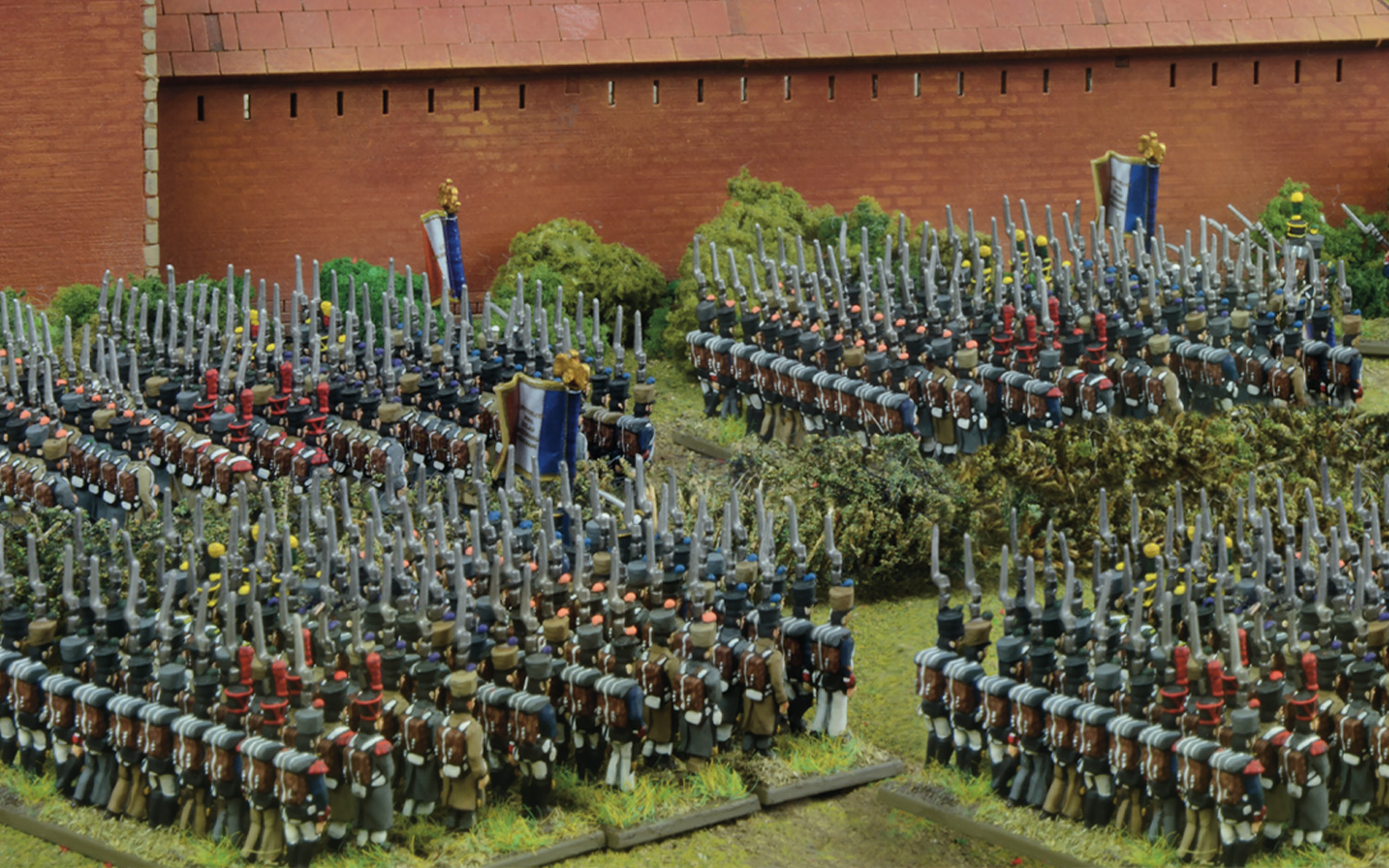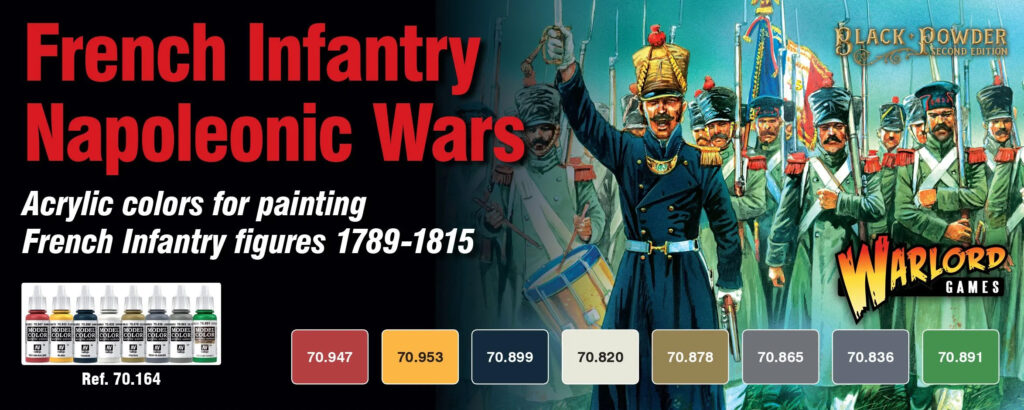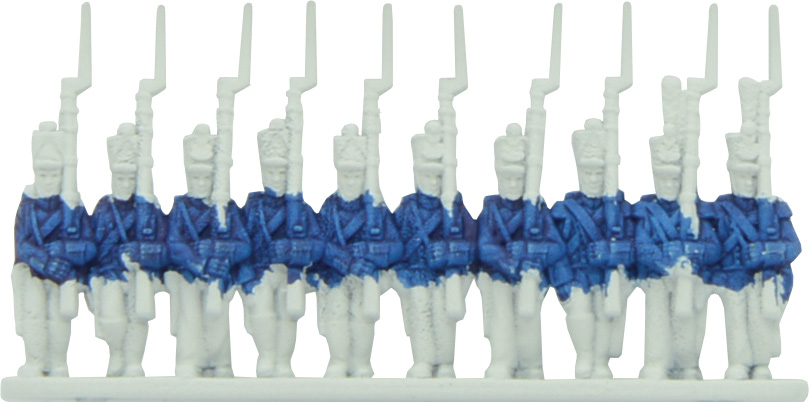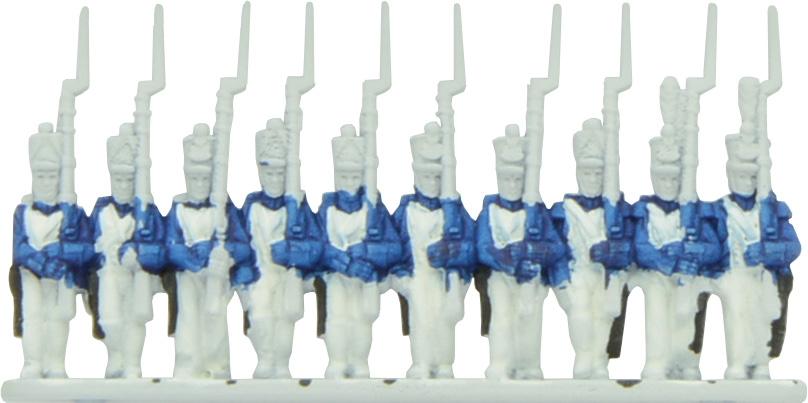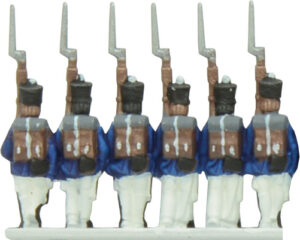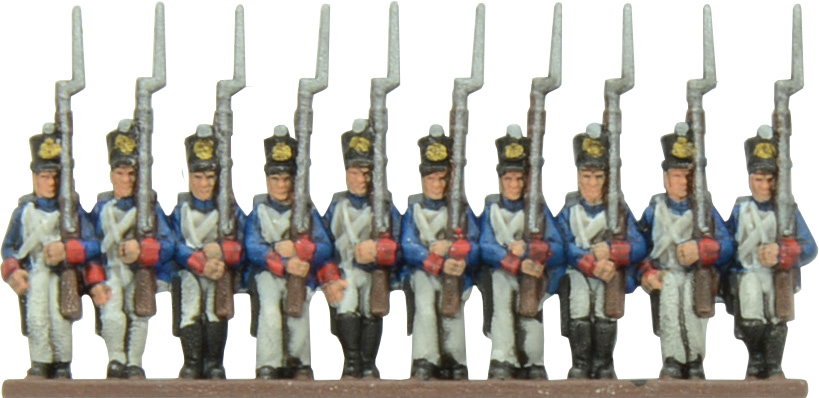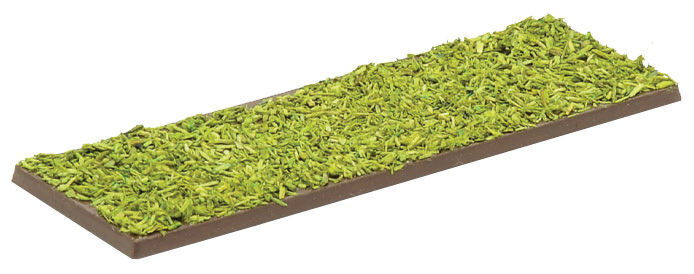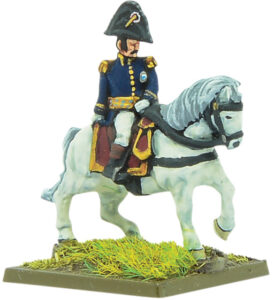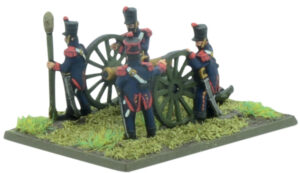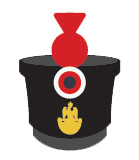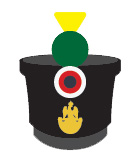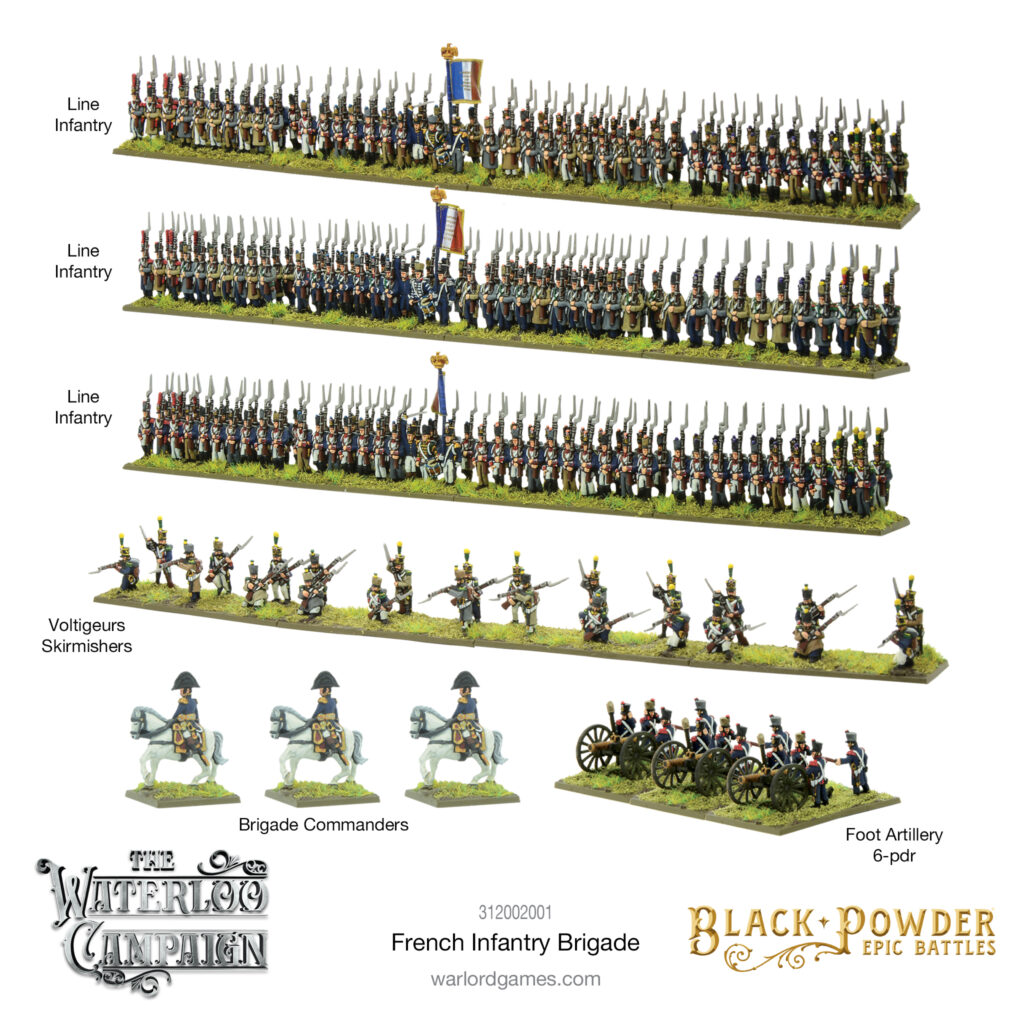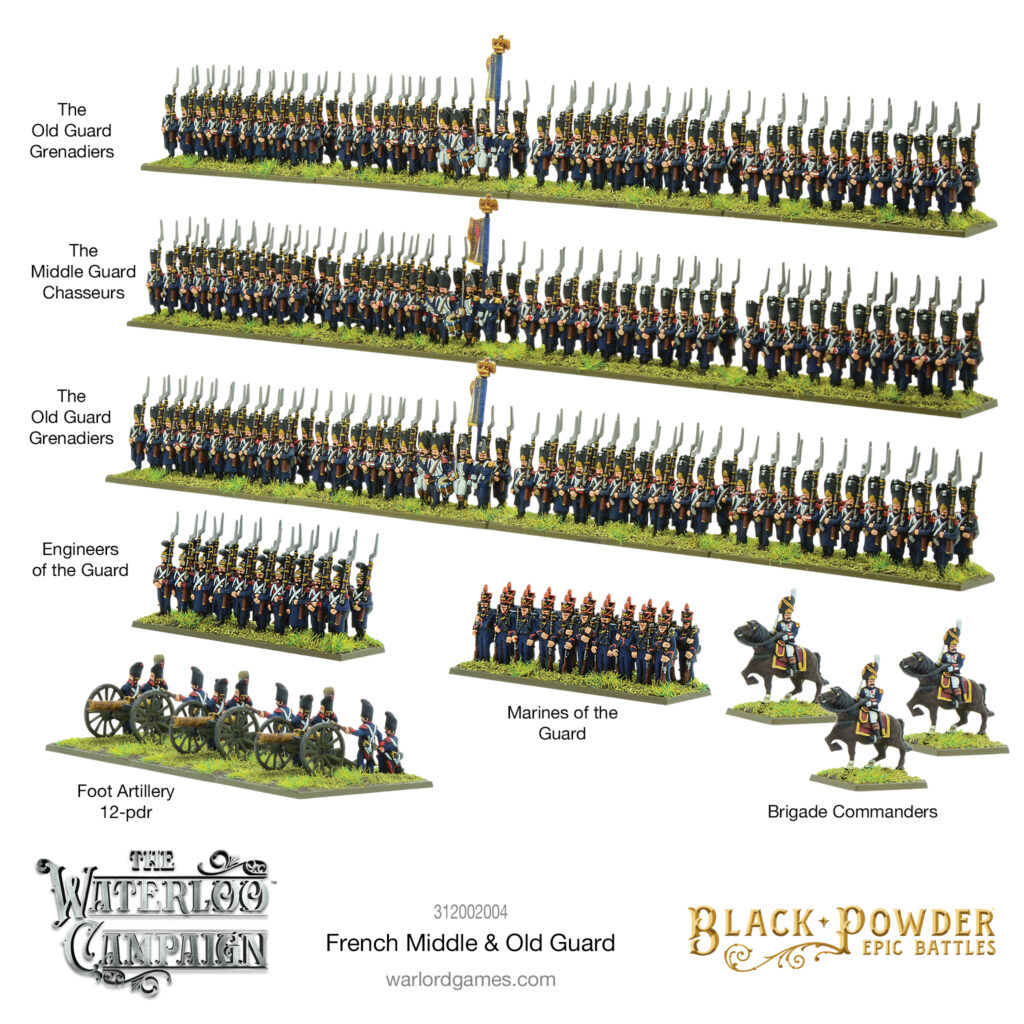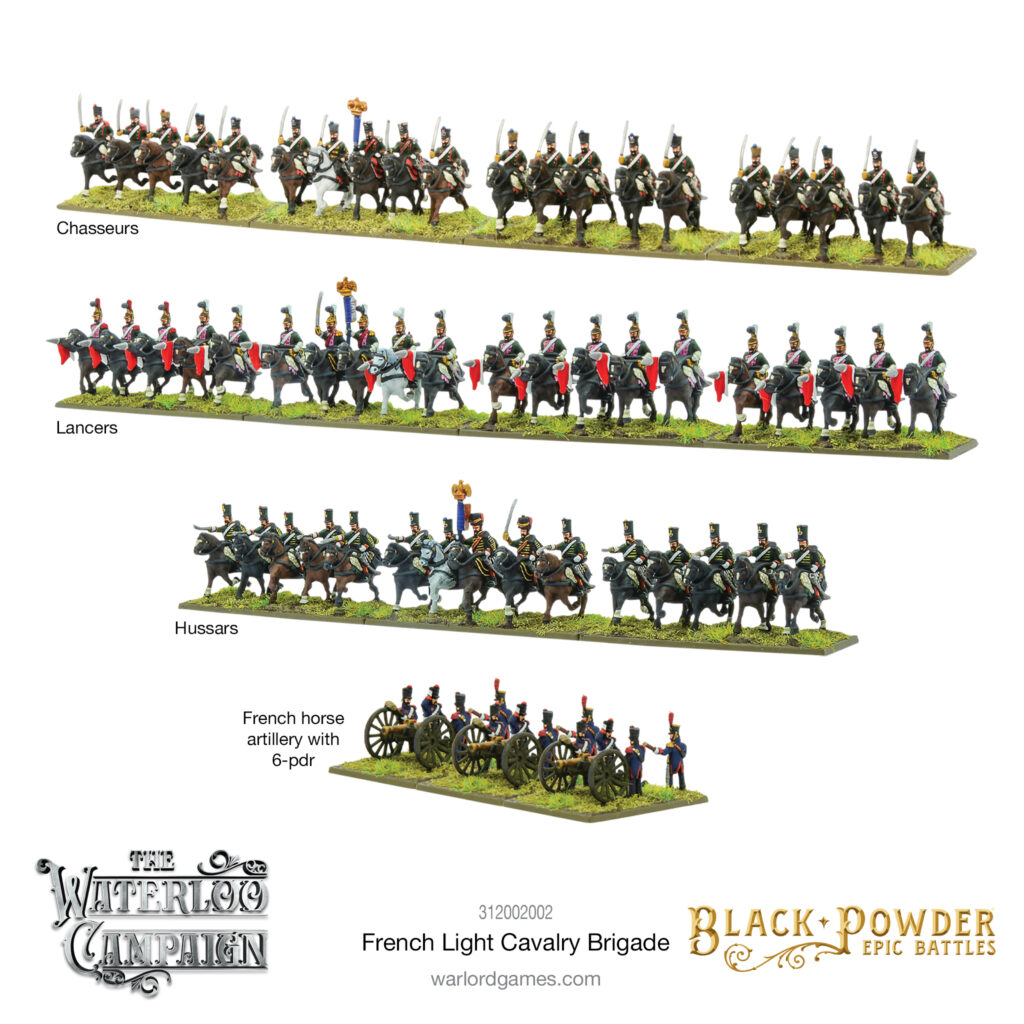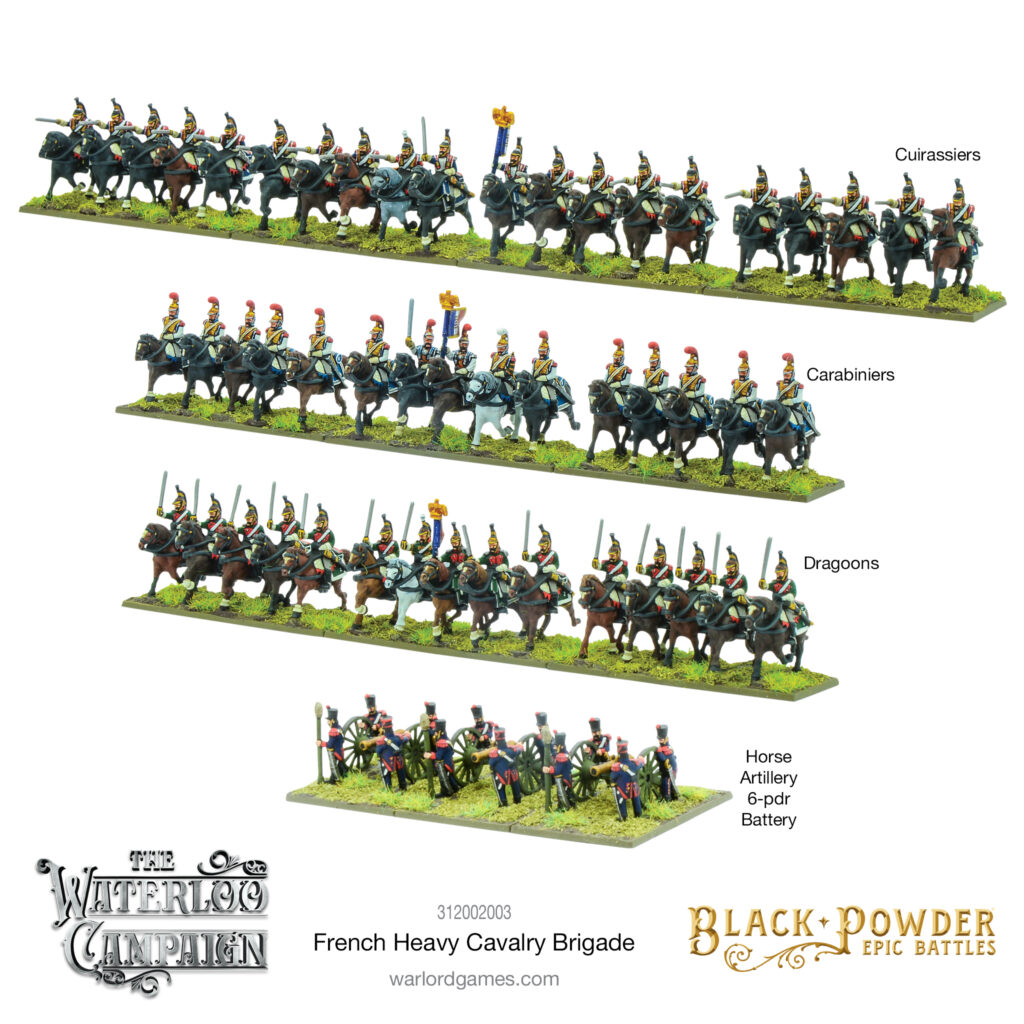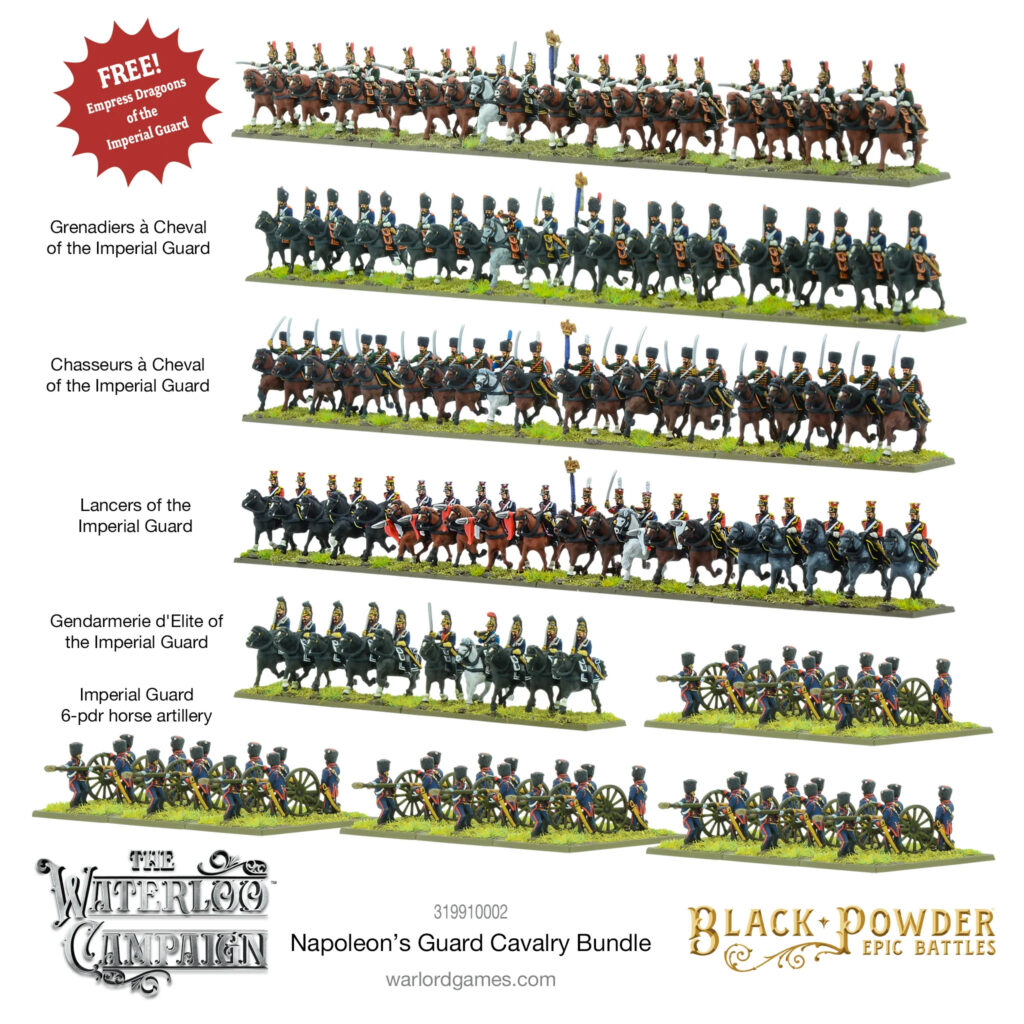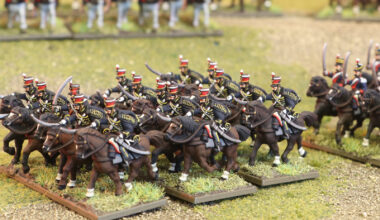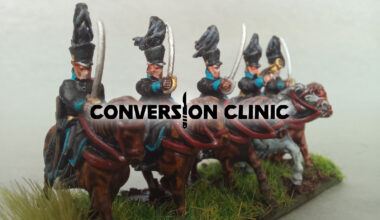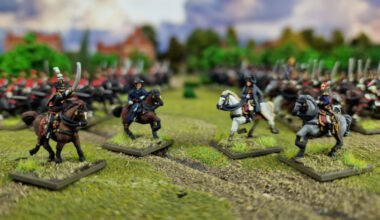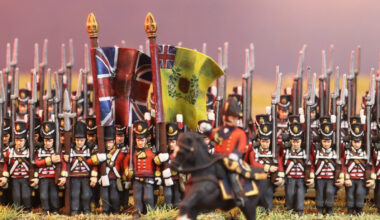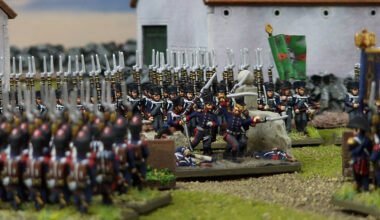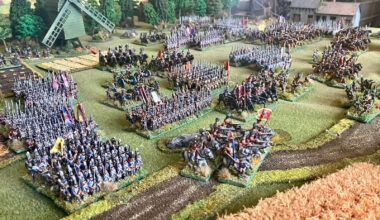This guide provides a method of painting your Epic Battles miniatures effectively, easily and onto the tabletop quickly! These simple techniques will allow you to get your forces painted in minimal time and to a decent standard.
We find it is quickest to paint all the models in a unit in one go, applying each stage to them all before moving on to the next stage in a technique called ‘batch painting’.
The core colours found in this guide have been conveniently collected in the French Napoleonic Paint set. This contains eight Vallejo paint colours perfect to set you on the path to painting up French Infantry figures (in any scale) ranging from 1789-185.
These paints can also be purchased separately. Where we have used any paints not found in this set, we have linked them for ease.
Step 1: Block Colours
After carefully removing the strips of infantry from their frame, apply an undercoat with Army Painter White Spray Primer. Then paint all the jackets with (899) Prussian Dark Blue. Be as neat as you can but don’t worry about getting blue onto other parts as they will be painted over in later stages. For those wearing greatcoats, paint them (836) London Grey.
Then paint all the trousers with (820) Off-White. Be careful not to get any white onto the jacket area. After applying these two big blocks of colour, it’s just a matter of adding details.
Step 2: Details
From this point on more care must be taken not to let paint stray into unintended areas. Paint the whole musket Wood Brown followed by picking out the barrel, firing mechanism and bayonet in (865) Oily Steel. After that, paint the hands and face Caucasian Skin.
Paint the hat (shako), cartridge box, bayonet scabbard and shoes with Pitch Black. Finish the shako off by painting the front plate with (878) Old Gold. For those with covered shakos, paint them (836) London Grey.
Paint the backpack and any satchels or cases on the back of the miniature with Wood Brown and the greatcoat roll in (836) London Grey. Finally, paint the straps in (820) Off-White.
Carefully paint the leather straps, and front of the jacket in (820) Off-White. After that, the cuffs can be painted in (947) Dark Vermillion. Lastly, carefully pick out the pompons on the shako with (820) Off-White. For more pompon authenticity refer to the colour chart below.
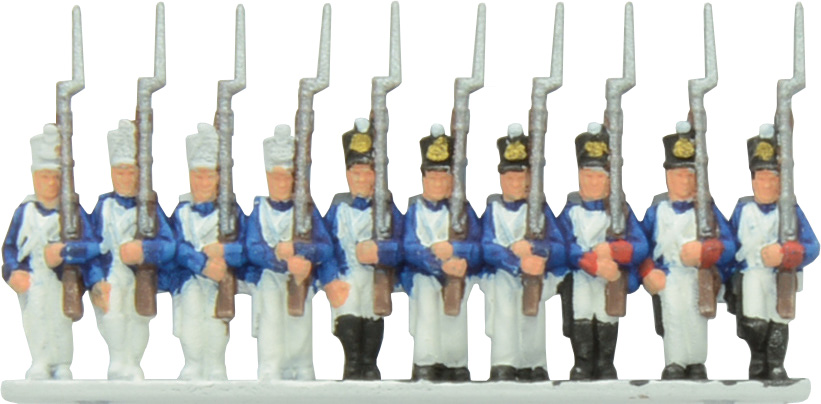
Step 3: Shading Wash
For this you will need Army Painter Dark Tone Quickshade. However, as the detail on the miniatures is so small, the wash will need to be ‘thinned’ with either water or, ideally, Army Painter Quickshade Wash Mixing Medium. Mix it roughly two parts Dark Tone to one part mixer and apply over the whole strip, taking care not to let it ‘pool’ too much in any one area, and leave to dry. Finally, paint the integral base with Wood Brown.
Step 4: Basing
Paint the whole base Wood Brown. Once dry, the strips can be stuck to their base. Once that is dry, apply a layer of PVA glue to the top of the base and cover with Army Painter Battlefield Grass. Once dry and the excess shaken off, the unit is ready to have its flags attached.
Beyond Infantry
The preceding section is only intended to get your models painted quickly. However, there is a rich diversity in the detail of Napoleonic uniforms – much more so than can be addressed here. Thankfully, there is a wealth of information available online about the different uniforms, which is especially useful when painting French cavalry as the different units can be quite varied.
Cavalry and Commanders
With the basic colours already mentioned, you can paint horses in variations of (820) Off-White, (836) London Grey, Pitch Black, or Wood Brown. Note that in general bugler horses will be white.
Artillery
Artillery crews are painted in a very similar way to the infantry, only their trousers are also (899) Prussian Dark Blue. The wooden carriage can be painted a mix of (891) Intermediate Green and Pitch Black, while the barrel is painted (878) Old Gold. Wheel rims can be painted (865) Oily Steel.
Pompon Colours
French infantry regiments were comprised of companies which were denoted by the colour of their pompon, and dictated where in the unit they were positioned. Use these handy graphics as your guide.
Collecting French in Black Powder Epic Battles: Waterloo
The Bonaparte’s French Army starter set provides a solid core of a French army fighting in the Hundred Days campaign – 10 units of line/light infantry, 3 units of skirmishing voltigeurs, units of each type of heavy cavalry (Cuirassiers, Dragoons and Carabiniers) and light cavalry (Hussars, Chasseurs a Cheval and Lancers), supported by 16 pieces of artillery and brigade commanders. Also included is an MDF building of the Decoster House and a bespoke A5 softback rulebook with Napoleonic-specific content.
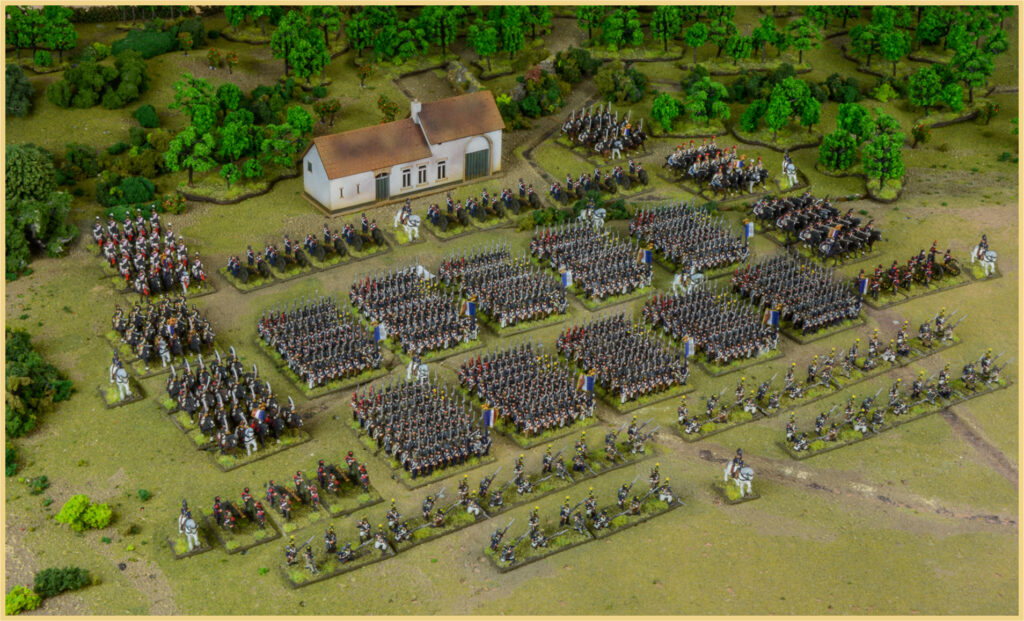
Expand your collection with additional brigades of infantry, light cavalry and heavy cavalry, or add in some of the greatest military units to ever take to the field of battles, the French Imperial Guard.
